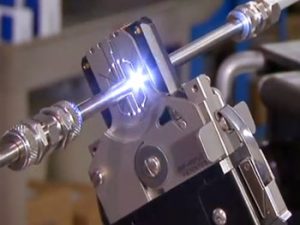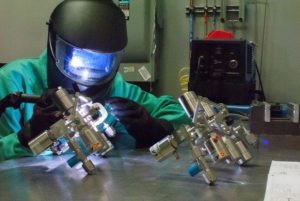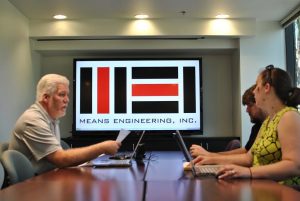Semiconductor Fabrication Process![]()
A semiconductor is a crucial component in many electronic devices. In fact, semiconductors are present in most modern electronics. Semiconductors contain the properties of both a conductor and an insulator.
Semiconductor Materials
Common semiconductor materials include silicon, selenium, boron, tellurium and germanium. Sometimes semiconductors are made from a combination of these materials. Since semiconductor materials are abundant in nature, they are often inexpensive. The use of these materials allows technology to remain affordable for the general public.
Silicon is the most common semiconductor material used today. This substance is extracted from sand, making it easily accessible and environmentally-friendly.
Semiconductor Fabrication
Semiconductor fabrication involves an extremely intricate process in which circuits are created on top of a wafer made from semiconducting material. Although small, these circuits contain a large number of electronic components. These components must all work simultaneously to perform functions that are vital to the operation of an electronics device.
Semiconductor circuits are assembled by skilled professionals is facilities referred to as “fabs”. The process involves the assembly of hundreds of layers of different materials, each containing their own circuit pattern, on top of a semiconducting material. The entire fabrication process takes approximately six to eight weeks to complete.
Preparation of Semiconductor Material
The semiconductor material must be properly prepared before it can be used. This involves melting and forming it so that it can be sliced into wafers. The size of the wafer varies depending on the type of semiconductor circuit being created.
Once sliced, the wafer undergoes a process to prepare it for photolithography. This process involves the growth of an oxide layer, a cleaning process to remove all contaminants and the application of photoresist to the wafer. The wafer is then spun, baked and exposed to intense UV light to develop the photoresist. Once prepared, a developer is added, the remaining oxide is etched away and the photoresist is removed.
Cleanroom Environment
The entire semiconductor fabrication process takes place inside a dedicated cleanroom. This ensures that dust and other contaminants are not able to come in contact with the parts of the semiconductor circuit. Because of their delicate nature and small size, even microscopic contaminants can render semiconductors ineffective.


 The Right Electronics Manufacturer Could Mean the Difference Between Ordinary and Extraordinary
The Right Electronics Manufacturer Could Mean the Difference Between Ordinary and Extraordinary

